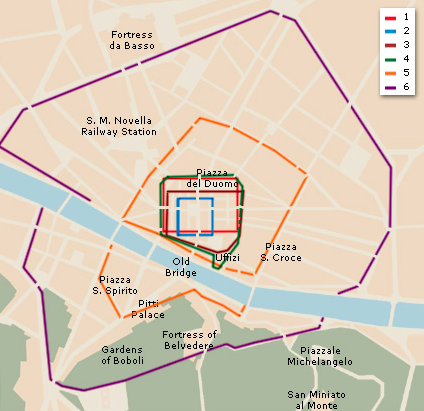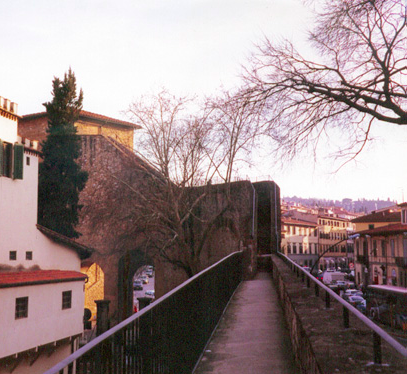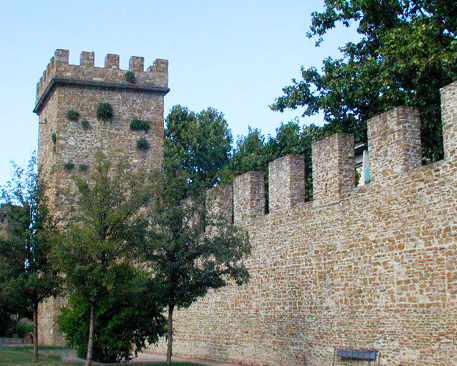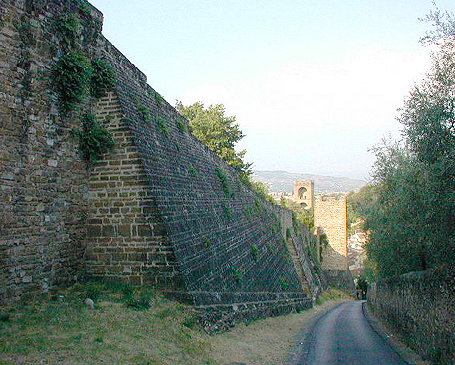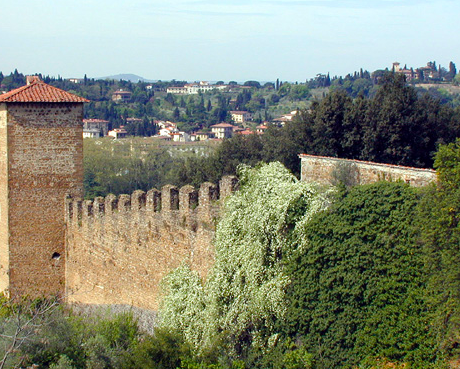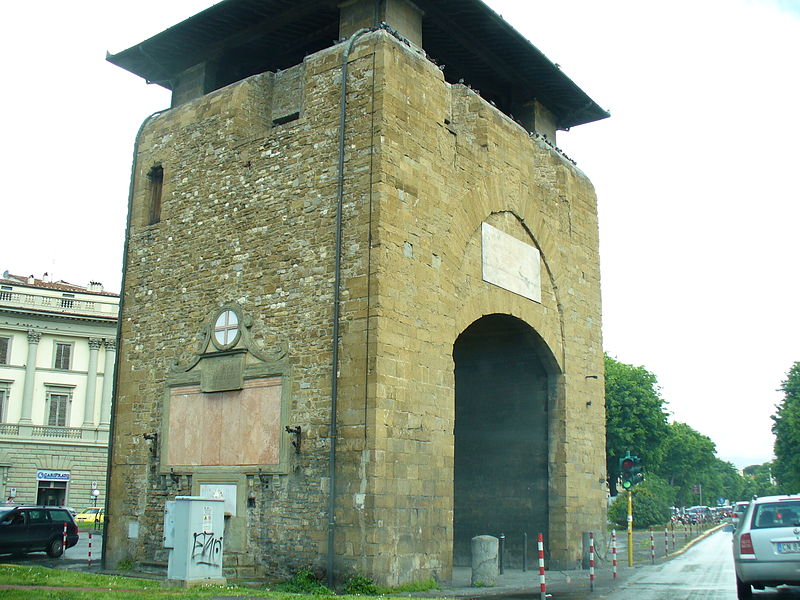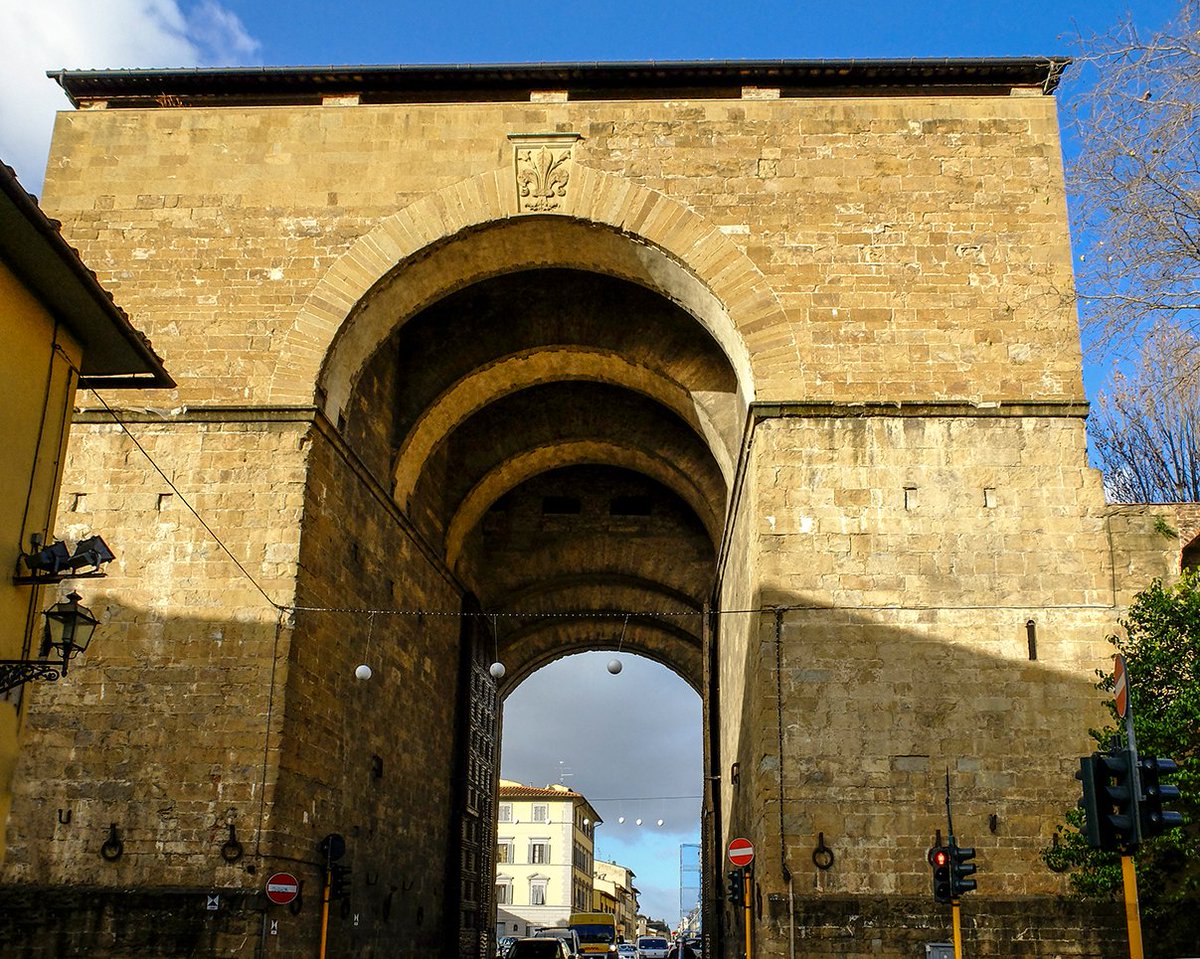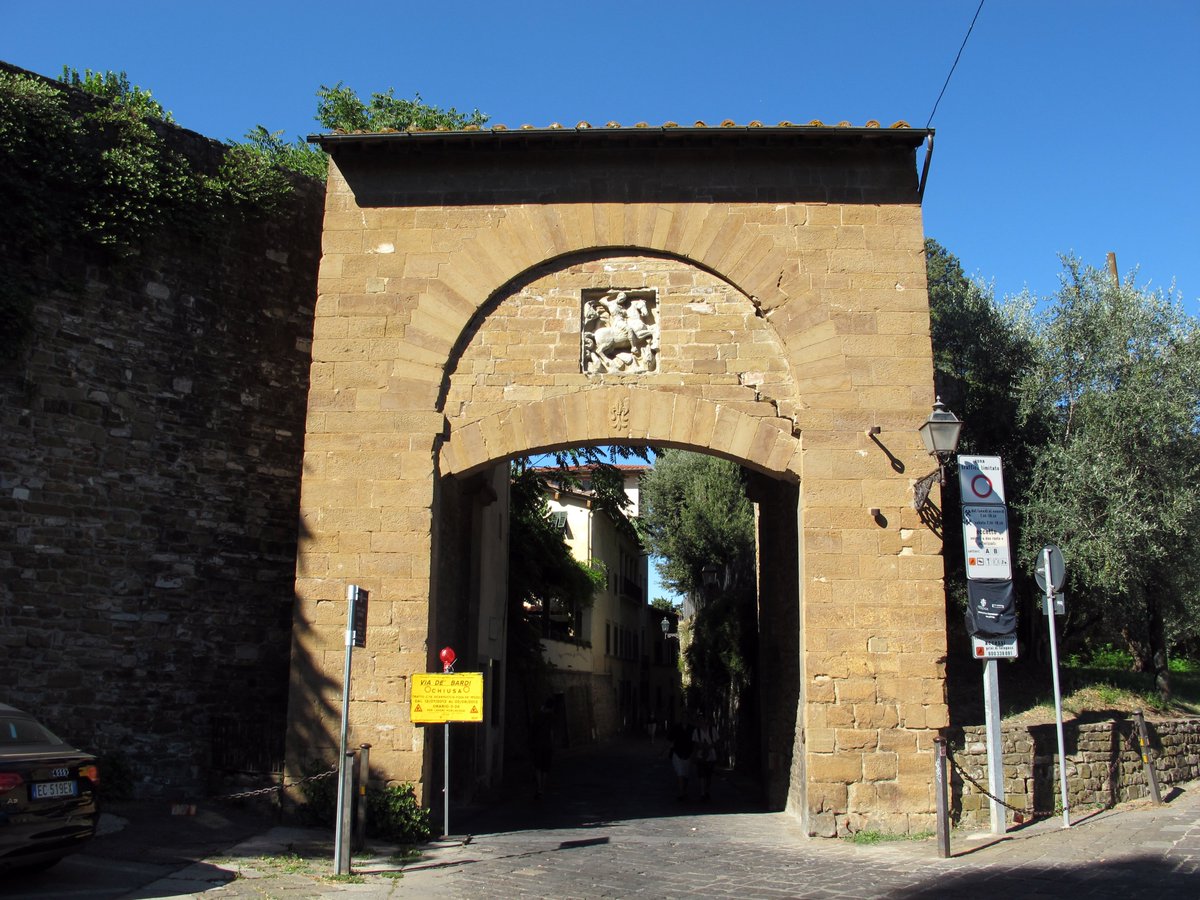The ancient Roman city was founded c.60 B.C between Piazza del Duomo & Piazza Santa Trinita. Its centre was in Piazza della Repubblica, at the crossroads formed by the two main streets, cardo (Via Roma and Via Calimala) and decumanus (Via Strozzi and Via del Corso).
In C2nd the city counted c.10,000 inhabitants & was surrounded by a first wall. After fall of the Western half it contracted so that by C6th it counted a mere 1000 inhabitants. A second city wall was then built, protecting a smaller area than the Roman one.
Florence flourished then again & at the beginning of C10th the city was surrounded by a wider third wall which for the first time extended itself to the river Arno.
The building of the fourth wall began in 1078: Florence had 20,000 inhabitants & the Duke of Tuscany moved his capital from Lucca to Florence.
Between Gate of San Frediano & Lungarno Santa Rosa: here the city walls show their original shape re: towers & merlons. It& #39;s how they looked before C19th demolition of original circuit.
Between Gate of San Miniato & Fortress of Belvedere. You can see Gate of San Niccolo in the background.
Porta alla Croce - where civic legend has it that San Miniato (Minias) – the Armenian prince – was made a martyr.

 Read on Twitter
Read on Twitter